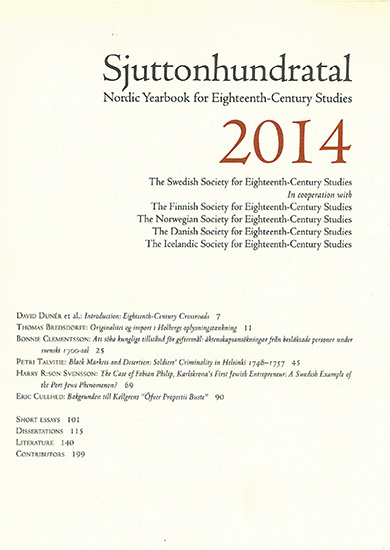The Case of Fabian Philip, Karlskrona’s First Jewish Entrepreneur: A Swedish example of the Port Jews Phenomenon?
DOI:
https://doi.org/10.7557/4.3084Keywords:
Port Jews, Jewish integration, Jewish life in Sweden, naval cities, naval history, Jewish proto-bourgeoisieAbstract
When studying a local society dominated by naval officers and the extent to which they integrated the Jewish community in their midst, a new perspective on Swedish naval history is revealed. The Swedish Royal Navy has always been internationally orientated, but previous research has not taken this into account. Furthermore, not much research has been undertaken on the Swedish Royal Navy at all. As a metropolitan outpost, Karlskrona has generally been seen, by historians and contemporaries alike, as largely peripheral to the upheavals of the late nineteenth and early twentieth centuries. Jews were not allowed to settle in Sweden until 1779, but in 1782 their settlement was permitted, though restricted to Stockholm, Gothenburg and Norrköping. The naval city of Karlskrona became an exception to the regulations. Previous research on the Jewish parish in Karlskrona was undertaken in the 1910s, and mistakenly concluded that it was the most unfriendly environment for Jews in early modern Sweden. This article seeks to reinterpret old sources and add newly found ones, which together engender a new perception of Jewish integration in Karlskrona. This is done by adopting the Port Jews concept and recognizing naval cities as internationally orientated production centres. In line with this, the article argues that Karlskrona, together with Gothenburg, should be interpreted as a Swedish example of the Port Jews concept.Metrics
Metrics Loading ...









